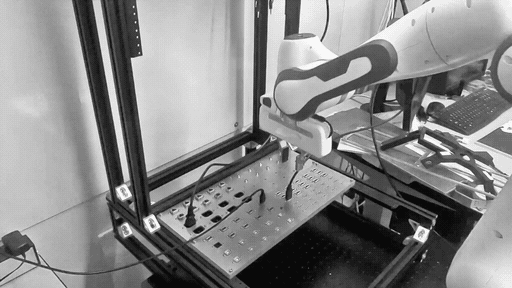Alphabet’s public-facing history with robotics has, thus far, been a spotty one. Most notably, Google X’s big acquisition push culminated in its selling Boston Dynamics to Softbank (who eventually flipped it to Hyundai). Alphabet/Google’s subsequent approach has been less flashy and focused on more immediate robotic tasks.
Unveiled today through the X blog, Intrinsic certainly fits the bill. In fact, it’s kind of an ideal take for Google. Effectively, the latest branch of the X Development tree is concerned with software for industrial robotics – those big, heavy machines that are perhaps not as nimble as many manufacturers would like.

Image Credits: Intrinsic
The post is penned by Wendy Tan-White, a VP of Moonshots at Alphabet, who now has the title of Intrinsic CEO. Of the company’s origins, the cofounder of SAAS website builder Moonfruit writes,
Over the last few years, our team has been exploring how to give industrial robots the ability to sense, learn, and automatically make adjustments as they’re completing tasks, so they work in a wider range of settings and applications. Working in collaboration with teams across Alphabet, and with our partners in real-world manufacturing settings, we’ve been testing software that uses techniques like automated perception, deep learning, reinforcement learning, motion planning, simulation, and force control.
There’s a vibrant community of startups out there looking to augment big, heavy robotics, including the likes of Veo, Symbio and Covariant. Often times, these companies focus on one specific element, like Veo’s safety protocols from human-robotic interactions. Fittingly, Intrisic appears to be shooting the moon here, so to speak, with plans to take a number of different issues at once.

Image Credits: Intrinsic
“We’re developing software tools designed to make industrial robots (which are used to make everything from solar panels to cars) easier to use, less costly and more flexible, so that more people can use them to make new products, businesses and services,” Tan-White writes.
Certainly Google has the capital and ability to attract talent to make some headway there, even if there are a number of competitors who have a head start. ThoughIntrinsic isn’t exactly brand new, either. The company has apparently been working in customary Google X stealth mode for a five-and-a-half years per the post — it clearly wanted something to show for its efforts before announcing itself to the world.
The news also marks Intrinsic’s debut as an “independent” Alphabet company, leaving the moonshot area behind as it seems partners in automotive, healthcare and electronics to help prove out its technologies.

